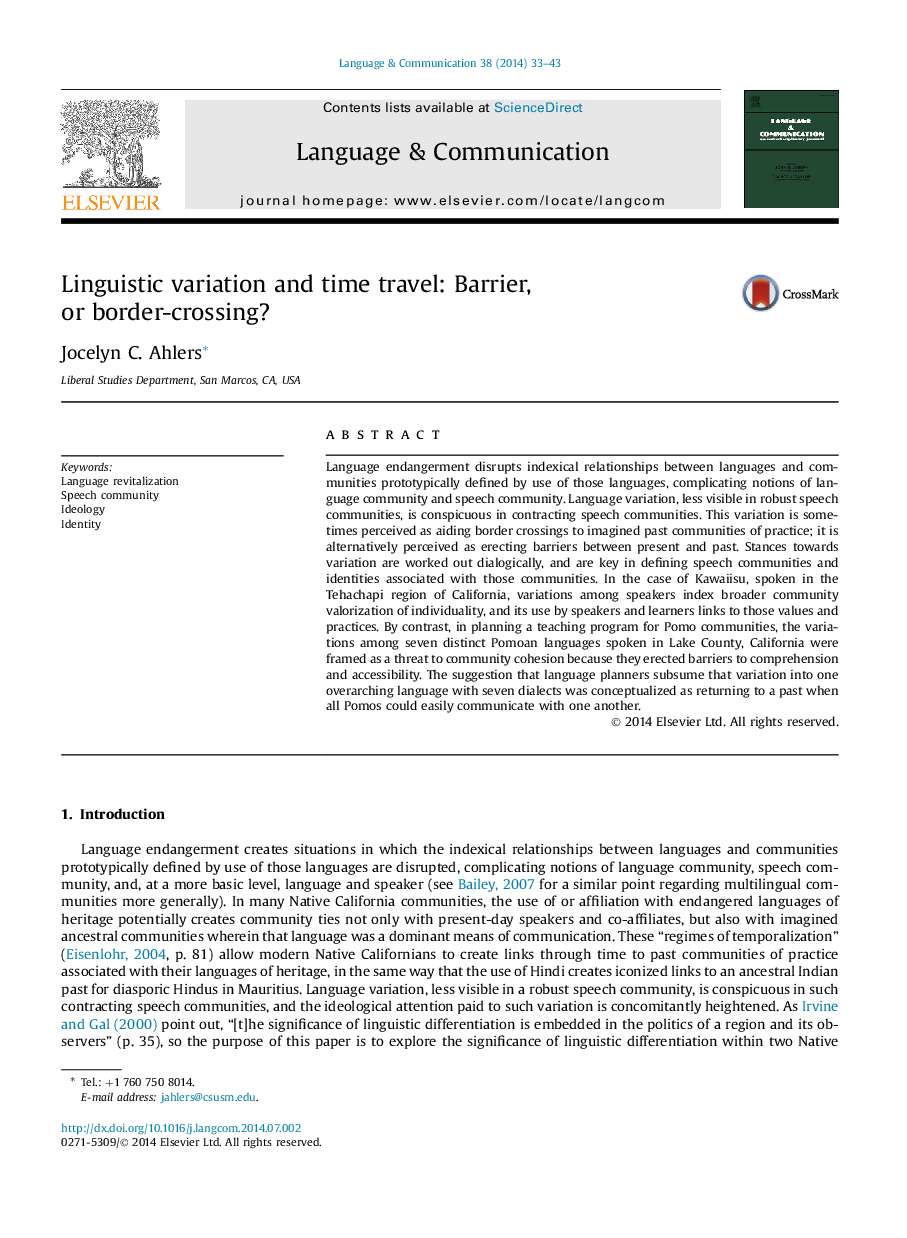| کد مقاله | کد نشریه | سال انتشار | مقاله انگلیسی | نسخه تمام متن |
|---|---|---|---|---|
| 935183 | 1474927 | 2014 | 11 صفحه PDF | دانلود رایگان |
• Endangered language communities problematize definitions of language/speech community.
• Endangered language communities use linguistic features to create links to the past.
• Iconization of linguistic features facilitates creation of community of speakers.
Language endangerment disrupts indexical relationships between languages and communities prototypically defined by use of those languages, complicating notions of language community and speech community. Language variation, less visible in robust speech communities, is conspicuous in contracting speech communities. This variation is sometimes perceived as aiding border crossings to imagined past communities of practice; it is alternatively perceived as erecting barriers between present and past. Stances towards variation are worked out dialogically, and are key in defining speech communities and identities associated with those communities. In the case of Kawaiisu, spoken in the Tehachapi region of California, variations among speakers index broader community valorization of individuality, and its use by speakers and learners links to those values and practices. By contrast, in planning a teaching program for Pomo communities, the variations among seven distinct Pomoan languages spoken in Lake County, California were framed as a threat to community cohesion because they erected barriers to comprehension and accessibility. The suggestion that language planners subsume that variation into one overarching language with seven dialects was conceptualized as returning to a past when all Pomos could easily communicate with one another.
Journal: Language & Communication - Volume 38, September 2014, Pages 33–43
